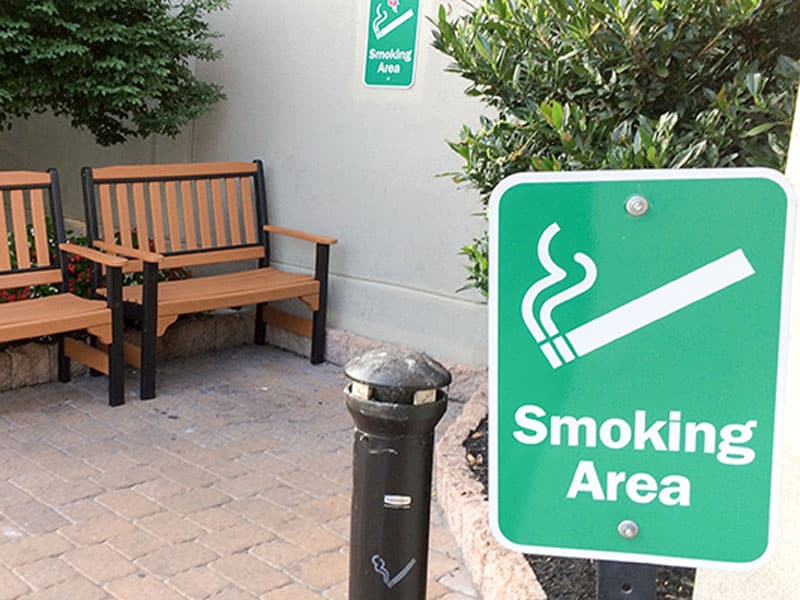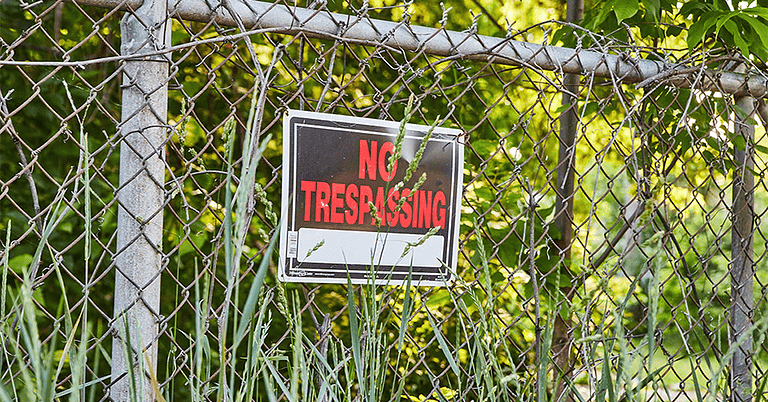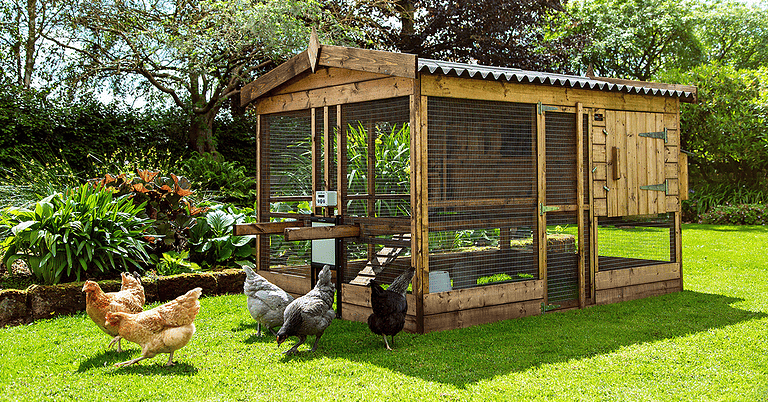Can HOA Prohibit Smoking
Are you a resident of a community governed by a Homeowners Association (HOA)? If so, you may wonder whether the HOA can prohibit smoking within its boundaries.
Secondhand smoke from neighbors can be a significant concern, especially in shared living spaces where it can easily seep through air ducts and walls. While smoking is generally legal, many states have implemented stricter regulations.
The power of HOAs to ban smoking depends on their governing documents, but recent rulings view secondhand smoke as a safety hazard that must be addressed. In this article, we will explore the issue of smoking restrictions in HOA communities and discuss how they can be implemented and enforced effectively. (Read Why Are HOAs Legal)

Can an HOA Association Ban Smoking?
Are you wondering if an HOA association has the power to ban smoking?
In this discussion, we will explore the key points surrounding this topic. We will delve into the legal aspects of a smoking ban, including state law considerations and the role of governing documents in imposing restrictions on smoking.
Additionally, we will examine the delicate balance between an individual’s right to smoke and an association’s rights and how to amend HOA rules to include a smoking ban.
Understanding the Power of an HOA to Prohibit
Understanding the power of your HOA to prohibit smoking is crucial when creating a smoke-free community policy. Your HOA can implement smoking restrictions and even ban smoking within certain areas, such as common areas, apartments, and outdoor spaces.
By prohibiting or restricting smoking, your community can create a healthier environment for all residents and reduce the risks of secondhand smoke. Take action now to promote a smoke-free community for everyone’s well-being.
Legal Aspects of a Smoking Ban: State Law Considerations
Enacting a smoking ban within an HOA requires careful consideration of state laws and regulations. State law can determine whether an HOA has the authority to prohibit smoking in common areas and even in individual homes.
Many states have restrictions on smoking in public places due to the health hazards of secondhand smoke. By implementing a smoking ban, HOAs can protect residents from exposure to secondhand smoke and create a healthier living environment for all members.
Restrictions on Smoking: the Role of Governing Documents
Governing documents are crucial in determining the extent of smoking restrictions within an HOA. Smoking in community associations, whether in apartments, common areas, or multiunit buildings, poses the health hazards of secondhand smoke.
Smoke can penetrate carpets and walls, affecting the well-being of residents. HOAs have the authority to prohibit smoking through their governing documents to address this issue. Implementing such restrictions can create a healthier and more enjoyable living environment for all members.
Right to Smoke vs. Association’s Rights: Finding the Balance
Finding a balance between the right to smoke and the rights of the association is crucial in addressing smoking-related issues within an HOA. While individuals have the right to smoke, associations are responsible for creating a safe and healthy environment for all residents.
This may involve implementing restrictions on smoking in common areas, such as pools or clubhouses, and considering the impact of secondhand smoke in apartments. Balancing individual rights with the community’s well-being is essential in finding practical solutions. (Read Why Are HOA Fees So High)
How to Amend HOA Rules to Include a Smoking Ban
Amending HOA rules to include a ban on smoking can be achieved through a thorough and collaborative process. By examining state laws and consulting legal experts, you can determine the extent of your association’s authority in implementing smoking restrictions.
Communicating with residents and gaining support is crucial for successfully amending the rules. Considering the health hazards of secondhand smoke, a comprehensive smoking policy will ensure a healthy and comfortable living environment for all residents.

The Issue of Secondhand Smoke in Community Associations
Are you concerned about the dangers of exposure to secondhand smoke in your HOA community? In this discussion, we will explore how secondhand smoke can define a nuisance within an HOA community and the importance of implementing no-smoking policies to protect homeowners from the harmful effects of secondhand smoke.
We will also address the issue of smoking in common areas and discuss the role and responsibilities of the HOA in handling smoking neighbors. Let’s delve into these topics and advocate for a healthier, smoke-free environment within your community.
The Dangers of Exposure to Secondhand Smoke
To protect your health and well-being, you must know the dangers of secondhand smoke exposure. When exposed to secondhand smoke, you risk experiencing the harmful effects of cigarette smoke. Secondhand smoke contains over 7,000 chemicals, including more than 70 that can cause cancer. It can lead to respiratory problems, heart disease, lung cancer, and an increased fire risk.
To minimize these risks, it is crucial to implement smoking rules and create environments that are free from secondhand smoke.
How Secondhand Smoke Defines Nuisance in an HOA Community
Secondhand smoke in an HOA community can be considered a nuisance due to its harmful effects on residents’ health and well-being. Smoking in bars and restaurants is now prohibited, recognizing the public nuisance it poses.
Smoke in common areas and inside units can penetrate walls and carpets, making it difficult to clear the air. The associated health risks make secondhand smoke a severe issue that constitutes a nuisance that should be addressed for the well-being of all residents.
No-Smoking Policies: Protecting Homeowners from Secondhand Smoke
Implementing a no-smoking policy is an effective way to protect homeowners from the dangers of secondhand smoke. By establishing clear no-smoking procedures, homeowners associations and community associations can ensure the health and well-being of their residents.
These policies safeguard individuals from the harmful effects of secondhand smoke and create a peaceful and healthy living environment. HOA boards play a crucial role in implementing and enforcing these smoking regulations, addressing any concerns or issues from smoking neighbors. (Read Can HOA Ban Chickens In Texas)
Addressing Common Areas: Smoking in Public Spaces
If you encounter individuals smoking in public areas of your community, addressing the issue and enforcing any existing smoking restrictions is essential.
State to state, HOAs have the authority to restrict smoking within familiar and outdoor public areas like balconies and patios. These restrictions are typically outlined in the governing documents of the association.
Handling Smoking Neighbors: HOA’s Role and Responsibilities
To address the issue of smoking neighbors, you should know your HOA’s role and responsibilities in handling this matter.
HOAs are vital in maintaining harmony within their communities, including addressing smoking-related concerns.
Their responsibilities involve creating and enforcing policies that regulate smoking in public areas and shared spaces.

HOAs and Smoking Restrictions in Condo Communities
In this discussion, we will explore the topic of HOAs and smoking restrictions in condo communities. We’ll cover the basics of condominium rules and smoking, including policies that ban smoking within units.
We’ll also delve into the rights and restrictions surrounding smoking on balconies, the more significant issue of smoke-free condominiums, and whether they should be allowed or prohibited.
Condominium Rules and Smoking: the Basics
You should be familiar with the basics of condominium rules and smoking.
Condominium rules regarding smoking vary depending on state or local regulations and the specific policies of each HOA. Some HOAs may allow smoking in certain designated areas, such as patios and balconies, while others may prohibit residents from smoking inside their units altogether.
Understanding your condominium’s specific rules and regulations regarding smoking is essential to ensure compliance and maintain a harmonious living environment for all residents.
Condo Association Policies: Ban on Smoking Within Units
If your condo association has implemented a ban on smoking within units, it is essential to familiarize yourself with the updated policies.
The association must ensure residents understand the reasons behind the ban and the potential health hazards of secondhand smoke. The association could create a healthier living environment for all residents by prohibiting smoking within units.
Additionally, implementing separate smoking areas or designated community buildings might be considered an alternative for those who continue smoking tobacco.
Smoking on the Balcony: Rights and Restrictions
Implementing restrictions on smoking in outdoor areas like balconies and patios can help address concerns about secondhand smoke within an HOA community. By prohibiting smoking in these areas, you can reduce the risk of new smoking complaints and minimize the smoke wafting into neighboring units.
This approach protects residents’ health and well-being and promotes a peaceful living environment for everyone. Consider implementing these restrictions to ensure a smoke-free community for all.
The Issue of Smoke-Free Condominiums: Allowing or Prohibiting?
Allowing or prohibiting smoking in condominiums can be a contentious issue that requires careful consideration of the health and well-being of residents.
It is essential to prioritize the safety and comfort of all residents when making decisions regarding smoking policies. Secondhand smoke can pose serious health risks, including respiratory problems and an increased fire risk.
The Question of Reasonable Accommodation in Smoking Bans
To address the question of reasonable accommodation in smoking bans, it is essential to recognize the needs and rights of individuals who may require alternative solutions for their smoking habits. Some people may have difficulty quitting or rely on smoking for various reasons.
Therefore, implementing a flexible approach that considers these circumstances can promote fairness and inclusivity while addressing secondhand smoke exposure concerns. (Read Will Propane Tanks Explode From Cold)

How to Implement and Enforce a Smoking Ban in HOA Communities
If you want to create a comprehensive no-smoking policy in your HOA community, there are several vital steps and advice to consider.
This includes establishing clear rules and regulations, communicating the policy effectively to residents, and promptly and consistently addressing violations.
Additionally, it’s essential to be aware of the legal considerations surrounding tobacco smoke and unreasonable disturbance and the challenges that may arise in implementing smoking restrictions within your community.
Creating a Comprehensive No-Smoking Policy: Steps and Advice
Establishing a smoke-free community policy requires your support as property owners. By amending the CCR to include the new policy, you can create a healthier and safer environment for everyone.
A comprehensive no-smoking policy is evidence-based and necessary to address secondhand smoking complaints. It involves steps such as implementing smoking rules, using air purifiers, and restricting smoking to certain areas or buildings within the community.
Together, we can create a peaceful and healthy living space for all residents.
Enforcing HOA Smoking Restrictions: Dealing with Violations
Enforcing the HOA smoking restrictions is essential for maintaining a healthy and safe environment within your community. By enforcing these rules, you can protect residents from the harmful effects of secondhand smoke and reduce the fire risk.
Implementing penalties for violations, such as fines or eviction as a last resort, sends a clear message that smoking is not tolerated in common areas or within individual homes. This proactive approach promotes the overall well-being of the community.
Communicating the Smoking Ban: Role of Condo Association
To effectively communicate the smoking ban within your condo association, you can distribute clear and concise information about the new policy through email or community bulletin boards. This method ensures that all residents know the ban and its implications.
By providing evidence-based information on the health hazards of secondhand smoke, you can advocate for a smoke-free environment that prioritizes the well-being of all residents.
Encourage open dialogue and address concerns or questions to ensure a smooth transition to a smoke-free community.
Legal Considerations: Tobacco Smoke and Unreasonable Disturbance
When considering the legal implications of tobacco smoke and unreasonable disturbance, you should be aware of how secondhand smoke can potentially violate the rights of other residents in your condo association.
Secondhand smoke can circulate through airway ducts and heating vents, penetrating carpets and walls. It is essential to understand that your HOA can implement smoking restrictions to protect the health and safety of all residents in common areas and within individual units.
Challenges in Implementing Smoking Restrictions
If you’re facing challenges in implementing smoking restrictions, it’s essential to consider the potential impact on the health and well-being of all residents within your condominium community.
Secondhand smoke can pose serious health hazards, including respiratory problems, heart disease, and lung cancer.
Enforcing smoking rules and creating a smoke-free policy can create a peaceful and healthy environment for everyone.
Taking steps to address these challenges is crucial in protecting the rights and well-being of your community members.
The Impact of Smoking Bans in HOAs: Looking at the Bigger Picture
Are you curious about the effects of secondhand smoke and the health concerns it poses within HOA communities?
In this discussion, we’ll delve into the pros and cons of smoking bans in community associations, exploring whether there is a link between smoking restrictions and property value.
Additionally, we’ll examine the future of smoking in public areas within HOA communities and advocate for smoke-free environments.
Join us as we clear the air and call for smoke-free HOA communities.
Effects of Secondhand Smoke: A Look into Health Concerns
Secondhand smoke poses serious health risks, including respiratory problems and increased fire risk. The harmful chemicals in secondhand smoke can cause lung cancer, heart disease, and respiratory infections.
Children exposed to secondhand smoke are at a higher risk of developing asthma and ear infections. It is essential to advocate for smoke-free environments to protect the health and well-being of individuals, especially in community settings like homeowners associations where people live near one another.

Pros and Cons of Smoking Bans in Community Associations
Now that you understand the health concerns of secondhand smoke let’s explore the pros and cons of smoking bans in community associations.
Implementing a smoking ban can have several benefits, such as reducing secondhand smoke exposure and creating a healthier environment for residents.
However, it can also be met with opposition from individuals who prefer to smoke.
It is essential to carefully consider these factors when deciding whether to implement a smoking ban in your HOA community.
Smoking Restrictions and Property Value: Is There a Link?
Considering smoking restrictions in your community association can impact property values and create a more desirable living environment for residents.
Studies have shown that smoke-free policies in housing communities can increase property values by up to 20%. Smoke-free environments appeal to more potential buyers and renters as they prioritize health and wellness.
Additionally, smoking restrictions reduce the risk of fire and damage to property, leading to lower insurance premiums.
The Future of Smoking In Public Areas within HOA Communities
If you want to know how smoking in public areas within HOA communities might change, staying informed about evolving laws and regulations is essential.
Many states have implemented stricter regulations on smoking in public places like offices, workplaces, bars, and restaurants. Landlords, businesses, and workplaces also have the authority to prohibit smoking.
As concerns about secondhand smoke continue to grow, more HOAs may adopt policies to restrict or ban smoking in common areas for the health and safety of residents.
Clearing the Air: A Call for Smoke-Free HOA Communities
To create a healthier and more peaceful environment, you must support the establishment of smoke-free policies in your HOA community.
Secondhand smoke poses serious health risks, including respiratory problems and an increased risk of lung cancer. You can protect yourself and your neighbors from these hazards by implementing smoke-free policies.
Research shows that such policies can reduce exposure to secondhand smoke by up to 85%.
Let’s work together to create a safer and healthier living environment for all residents.
Conclusion
In conclusion, HOAs have the authority to prohibit smoking within their communities. Secondhand smoke poses a significant health risk and can easily infiltrate neighboring homes in managed assemblies. Recent rulings recognize the responsibility of HOAs to protect residents from this hazard.
Implementing and enforcing smoking bans requires the support of property owners and may involve warnings, fines, or even evictions. By creating smoke-free policies, HOAs prioritize the well-being of their residents and create a healthier living environment for all.







